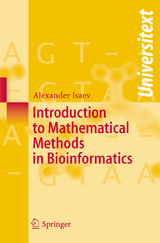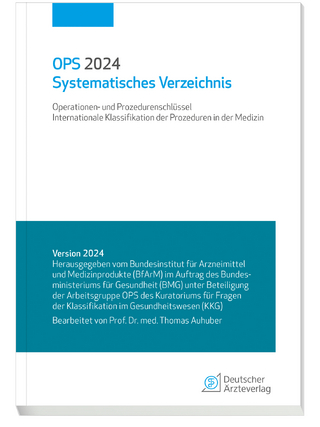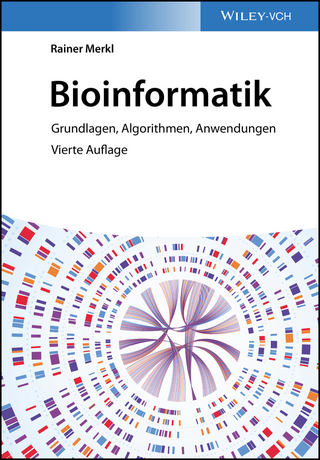Introduction to Mathematical Methods in Bioinformatics
Springer Berlin (Verlag)
978-3-540-21973-6 (ISBN)
Alexander Isaev is a senior lecturer in mathematics at The Australian National University, Canberra. His mathematical background is the area of several complex variables. After completing a PhD degree in 1990 at the Moscow State University, he taught at the University ofIllinois (Urbana-Champaign) and at Chalmers University of Technology, Göteborg, Sweden. One is his current interests is in applying mathematics to biology.
Sequence Analysis.- Introduction: Biological Sequences.- Sequence Alignment.- Markov Chains and Hidden Markov Models.- Protein Folding.- Phylogenetic Reconstruction.- Mathematical Background for Sequence Analysis.- Elements of Probability Theory.- Significance of Sequence Alignment Scores.- Elements of Statistics.- Substitution Matrices.
From the reviews:
"The book has two parts corresponding to two courses. The first part is 'Sequence Analysis' ... . The second part is 'Mathematical Background for Sequence Analysis' ... . The book concentrates on the mathematical basics of bioinformatics ... . It is a comprehensive guide to bioinformatics, which takes into account that a bioinformatician should be able not only to use software packages, but also to know the mathematics behind these packages." (T. Postelnicu, Zentralblatt MATH, Vol. 1053, 2005)
"In Introduction to Mathematical Methods in Bioinformatics, Alexander Isaev describes the mathematical foundations of bioinformatics ... . The book succeeds in describing the fundamental mathematics behind computational sequence analysis, and in giving a taste of typical applied bioinformatics. ... The number of examples presented in the book is excellent ... . is a strong description of the theory behind the standard methods of computational sequence analysis. Thebook serves as a springboard for considering current bioinformatics research problems ... ." (Michael W. Deem, Physics Today, October, 2005)
"Introduction to Mathematical Methods in Bioinformatics introduces several basic topics in biological sequence analysis ... . This book is an excellent textbook for students majoring in biology, computer science, and, especially mathematics ... . presents a clear and mathematically rigorous exposition of procedures, algorithms, and models commonly used in analyzing biological sequences ... . a splendid textbook for students with some mathematical background. It is quite mathematical in its logical approach and rigorous presentation, fulfilling the author's aim ... ." (Yi Huang, Journal of Applied Statistics, Vol. 32 (4), 2005)
"The book's first half, cover sequence alignment, hidden Markov models, protein folding, and phylogenetic reconstruction. The second half provides necessary grounding in probability and statistics for full appreciation of the first ... . Summing Up: Recommended. Upper-division undergraduates and up." (D.V. Feldman, CHOICE, Vol. 42 (8), April, 2005)
"This book grew out of two lecture courses which were given by the author ... . The first half deals with some important topics in bioinformatics. The exposition is mathematical in character, and it is an appropriate book for a course in bioinformatics ... . contains many useful aspects, including good detailed explanations that let mathematicians get to the bottom of important bioinformatic methods ... . The second part of the book is essentially a course in probability theory ... . this book does a really good job." (Mark Broom, Journal of the Royal Statistical Society, Vol. 168 (2), 2005)
"The book combines several topics in biological sequence analysis with mathematical and statistical material required for such analysis. The book has two parts corresponding to two courses. The first course is for second year-students ... . It concerns four importanttopics in bioinformatics ... and covers them in considerable detail. The second course (intended for third-year students) includes elements of probability ... . The path taken in these chapters is to give the reader all the main constructions ... to illustrate them by many examples." (Zentralblatt für Didaktik der Mathematik, November, 2004)
| Erscheint lt. Verlag | 2.6.2004 |
|---|---|
| Reihe/Serie | Universitext |
| Zusatzinfo | XIV, 294 p. 77 illus. |
| Verlagsort | Berlin |
| Sprache | englisch |
| Maße | 155 x 235 mm |
| Gewicht | 480 g |
| Themenwelt | Informatik ► Weitere Themen ► Bioinformatik |
| Mathematik / Informatik ► Mathematik ► Angewandte Mathematik | |
| Naturwissenschaften ► Biologie ► Genetik / Molekularbiologie | |
| Schlagworte | Alignment • Analysis • Bioinformatics • Bioinformatik • Biological sequence analysis • Biology • Computer • Hidden Markov Model • Markov Chain • Probability • Sequence Analysis • Statistica • Statistics |
| ISBN-10 | 3-540-21973-0 / 3540219730 |
| ISBN-13 | 978-3-540-21973-6 / 9783540219736 |
| Zustand | Neuware |
| Haben Sie eine Frage zum Produkt? |
aus dem Bereich




